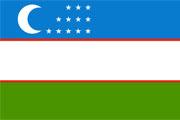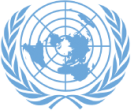Vintage photos of Tashkent exhibited in Manhattan
New York City’s Nailya Alexander Gallery opened its doors on April 5 to welcome the public to the vernissage for the exhibition of a renowned photo artist, Max Penson, one of the most prominent representatives of Uzbek photography. The art show features around 50 vintage gelatin silver prints from the artist’s family estate and several private collections. Organized by the Fund Forum and Nailya Alexander Gallery, the exhibition will run through May 13, 2011.
Max Penson was born in 1893 in a family of bookbinders in the small town of Veliszh near Vitebsk (Russia). In 1915, his family moved to Kokand (Uzbekistan) where he helped found an art-production school. In addition to being the principal of the school, Penson taught draftsmanship and painting. In appreciation of his work in Kokand, the district of Ferghana honored him with a camera, a gift that led to his giving up a career in education to follow his new passion for photography. He moved to Tashkent in 1923 and was hired by Central Asia’s largest newspaper Pravda Vostoka (Truth of the East) in 1925.
Penson’s most famous work, “Uzbek Madonna”, a portrait of a young woman nursing her child, won the Grand Prix at the World Fair in Paris in 1937. All told, he created roughly 30,000 photos dedicated to Uzbekistan. His images show men digging vast irrigation canals, attending literacy classes as well as telephone operators and tractor drivers. He created a unique visual chronicle, an epic poem in photographic form of the radical transformation of life and colossal engineering projects in the region.
Nailya Alexander, Director of the Gallery (USA):
“We have done a great deal of work in an effort to bring the idea for organizing this show into reality. Serious work and attention went into selecting works by the master among collectors’ and his family’s archives. And we are happy to present them to the New York public in collaboration with the Fund Forum.”
Notably, despite limitations Penson faced in his career, his artistic endeavors were aimed at capturing moments from the lives of grassroots Uzbek people such as builders involved in the construction of the Grand Ferghana Canal as well as elderly people, laboring peasants, and laughing children in villages in Uzbekistan.
Uzbekistan has given the world many talents and is home to unrivaled landscapes and vast natural endowments and is famed for its people’s hospitality and generosity. It is these riches, eternal values and human qualities that the great artist tried to capture and convey through his creations.
Miron Penson, photographer, cameraman, Max Penson’s son (USA):
“The very fact that downtown Manhattan is playing host to this exhibition is filling me with so much pride and joy, and it’s hard to express my feelings through words. My father couldn’t have seen himself exhibiting his art here even in his dreams. Documentation is an invaluable genre. Besides, the esthetics of the 20-30s is very attractive, it is very educational and informative. For some visitors this is an opportunity to immerse themselves in the past while for others it may be a pleasant introduction to something new.”
Those attending the April 5 opening reception included Susan Goodman, Curator at large of the Jewish Museum of Art; Jon Mason of Pace Gallery, N. Zaretskaya of TV Gallery; Grace Kennan Warnecke, Trustee of National Committee on American Foreign Policy as well as private collectors of artworks, heads of diplomatic missions of Japan, Australia, Lichtenstein, San Marino, Hungary, Slovakia, Macedonia, Russia, Israel, New Zealand, Croatia, Turkey, Pakistan and other countries.
Visitors to the opening reception said the art show that has given them impressions of a land an ocean away enriches the art palette of cultural life in New York City.


